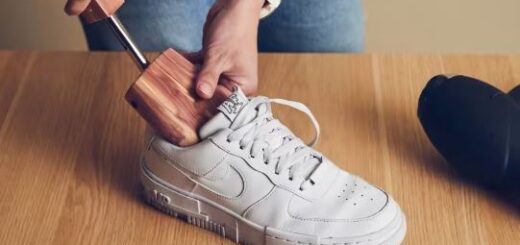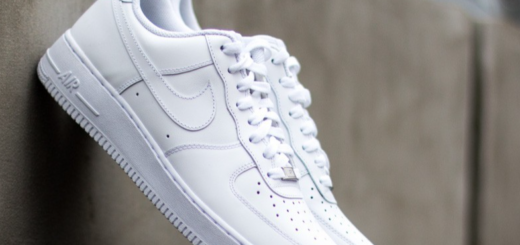Ultimate Guide to Cleaning and Caring for Leather Shoes and Boots at Home
Leather footwear, despite its durability and timeless charm, is inevitably exposed to the elements and everyday wear. From stepping into unexpected puddles to bumping into rough pavements, your cherished shoes are bound to collect scratches, grime, and dullness. But rather than viewing this as an annoyance, consider it an opportunity. Maintaining leather shoes not only preserves their elegance but also provides a satisfying and meditative routine. Best of all, you can manage this process right at home with a bit of knowledge and a few specialized tools.
By dedicating just a little time, even the most worn-looking pair can be brought back to life. This guide walks you through everything from gathering the right supplies to executing a complete restoration and shine. Let’s explore how you can keep your leather shoes in top shape for years to come.

Gathering the Essentials: Preparing for Leather Shoe Cleaning
Before diving into the cleaning process, it’s important to assemble a few key items that will make the experience smoother and more effective. You don’t need a professional cobbler’s toolkit, but investing in quality tools will significantly improve your results.
You’ll want to create a workspace using old newspapers or a cloth that you don’t mind staining. This keeps polish, soap, and dirt from damaging your surfaces. Insert wooden shoe trees into your footwear to help maintain their structure and make cleaning easier. If you don’t have shoe trees, crumpled paper can be a temporary stand-in.
Other essentials include a horsehair brush for removing surface debris, a soft cotton cloth for applying products, and specialty items like saddle soap, leather conditioner, pigmented cream polish, and wax polish. These products work together to clean, nourish, and protect your leather. A dedicated leather care brand such as Saphir is a trusted option, thanks to its heritage and high-quality ingredients.
Recommended Leather Shoe Care Products
Not all leather care items are created equal. Choosing premium products helps prevent damage while maximizing the restoration and protection of your shoes.
Cream polish from a reputable manufacturer delivers rich pigmentation, reviving faded areas and masking scuffs with ease. Wax-based polishes, often made with natural substances like beeswax or carnauba wax, form a protective coating that enhances water resistance and offers a refined finish.
To keep your shoes in shape between wears, cedar shoe trees are invaluable. They absorb moisture, eliminate odors, and preserve the form of the shoe, all while helping the leather breathe. Don’t forget a gentle brush made from horsehair — it’s perfect for cleaning and buffing without scratching the material.
Another key item is saddle soap, ideal for occasional deep cleaning. And to restore suppleness, look for a conditioner with nourishing oils or fats, such as mink oil-based formulas, often hailed as the gold standard in shoe care.
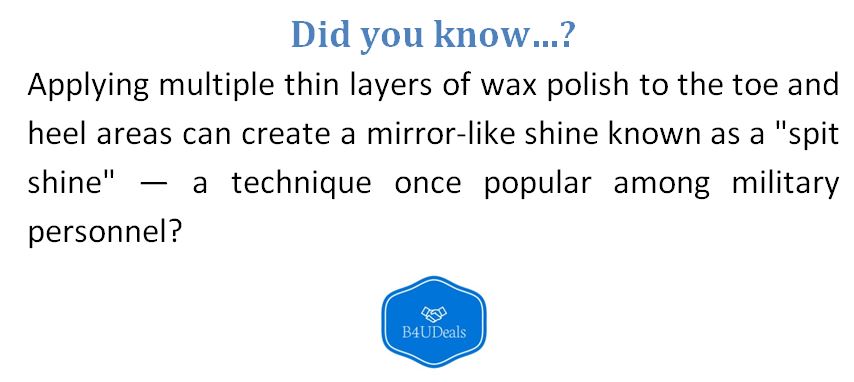
The Complete Leather Shoe Cleaning Process
With your tools lined up and workspace ready, you can begin the shoe rejuvenation process. Follow this step-by-step method to clean, restore, and shine your leather footwear.
Step One: Prepare Your Workspace and Footwear
Begin by choosing a clean, well-ventilated area where you can work comfortably. Spread out newspaper or an old towel to protect your surfaces. Take the laces out of your shoes to avoid getting polish or soap on them. Next, insert shoe trees or fill the shoes with paper to maintain their shape during cleaning. This small step ensures the leather stays firm and flat, making it easier to clean and polish evenly.
Step Two: Brush Away Surface Dirt
Using a horsehair brush, gently sweep away any accumulated dust, dirt, or dried mud. Employ short, brisk strokes to lift particles from the surface and seams. This preliminary cleaning step prevents dirt from getting trapped in the leather during later stages of conditioning or polishing. A clean surface ensures that the products you apply will bond directly to the leather, improving effectiveness and appearance.
Step Three: Clean with Saddle Soap
Occasionally, your shoes may require a deeper cleanse, especially if polish has built up or they’ve endured especially rough conditions. Saddle soap is a traditional cleaner designed specifically for leather. Lightly moisten the included sponge or a soft cloth, then work a small amount of soap into the leather using circular motions. You’ll notice the soap lathering as it lifts embedded dirt and old polish.
After thoroughly cleaning the shoes, take a clean microfiber cloth and wipe away the foam and residue. Allow the leather to dry naturally. This may take between 8 to 24 hours, depending on humidity and room temperature. It’s important not to rush this drying period, as applying conditioner to damp leather can lead to uneven absorption or even mildew.
Step Four: Rehydrate with Leather Conditioner
Once the shoes are completely dry, it’s time to nourish the leather. Just as human skin benefits from moisturizing, leather needs hydration to stay soft and crack-free. Using either your fingertips or a cotton cloth, apply a small dab of conditioner to one section at a time. Work it into the leather gently using circular motions.
The goal is to allow the conditioner to absorb into the material, rather than sitting on the surface. After covering the entire shoe, give it about 10 minutes to soak in. Then, return to your brush and buff the leather with quick, even strokes. This not only removes any excess product but also helps to activate any natural waxes contained in the conditioner.
Step Five: Apply Cream-Based Polish for Color and Repair
The next stage focuses on color restoration and surface-level scuff repair. Choose a pigmented cream polish that matches your shoe’s color. Apply it the same way as the conditioner — in small amounts, one area at a time, using circular movements.
The polish will blend into the leather, evening out discoloration and giving the shoe a richer hue. Let the cream rest for approximately 10 minutes before using the brush again to lightly polish the surface. This brings out a natural glow and removes any leftover polish that didn’t absorb.
Step Six: Protect and Shine with Wax Polish
To complete your restoration, apply a wax polish to form a protective barrier over the leather. This step enhances shine and shields the shoe from water and debris. Apply the wax thinly with a clean cloth or your fingers, again using gentle circular motions.
For general use, one coat is usually sufficient. However, you can apply additional layers on the toe and heel, where structure is more rigid and where extra shine is often desired. Allow each layer to harden before applying the next. Some shoe enthusiasts speed up the process by adding a drop of cold water before buffing, which helps harden the wax between applications and create a mirror-like finish.
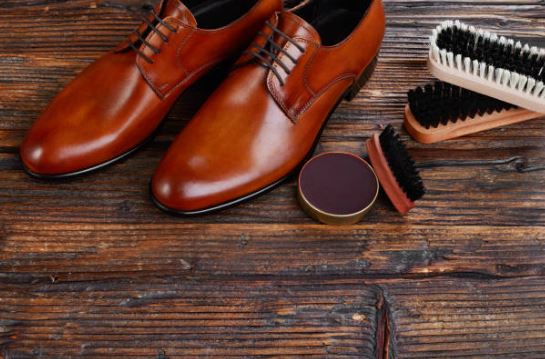
Enhancing Shoe Longevity: Maintenance and Protection
After you’ve cleaned and polished your shoes, you can take a few more steps to keep them protected over time. Good maintenance prevents damage and extends the lifespan of your leather footwear.
Waterproofing Leather Shoes and Boots
Moisture is one of leather’s worst enemies. Applying a waterproofing spray every few weeks is an easy and effective way to guard your shoes against rain and spills. Use a neutral product that doesn’t alter the leather’s color or texture. A quick application followed by 30 minutes of drying time ensures your shoes are ready for wet conditions without compromising their appearance.
Shielding Leather Soles from Wear
While most people focus on the upper part of the shoe, the soles also require care. Leather soles can be protected with a specialized liquid that penetrates and nourishes the material. Use a small cloth to rub the product into the sole in gentle circular motions. Once dry, the treated soles are more resistant to water and abrasion.
Preventing Damage with a Shoe Horn
A shoe horn might seem like an old-fashioned accessory, but it serves a vital purpose. By easing your foot into the shoe without crushing the back, it preserves the integrity of the heel counter and prevents unnecessary creasing. A simple tool, but one that can save your shoes from early deterioration.
Conclusion: Crafting a Lasting Relationship with Your Leather Shoes
Caring for leather shoes is more than a routine; it’s a practice in craftsmanship and preservation. These shoes are more than just fashion — they are durable companions that, with the right care, can serve you for many years. Rather than viewing maintenance as a chore, see it as a chance to reconnect with the artistry of shoemaking.
Spending a little time brushing, conditioning, and polishing will not only improve your shoes’ appearance but also extend their usefulness. The small effort you put in now will pay off in both aesthetics and performance.
Frequently Asked Questions (FAQs)
How often should I clean and polish my leather shoes?
Basic maintenance like brushing off dust should be done after each wear. Conditioning and polishing can be done monthly or after every 4–5 wears. Use saddle soap only when deeper cleaning is necessary, such as once or twice a year.
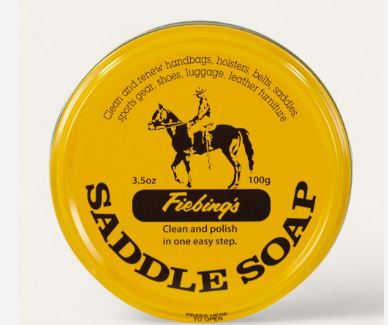
Are there household alternatives for cleaning leather shoes?
If specialty products aren’t available, you can use a damp cloth with a tiny amount of mild dish soap to clean the surface. Be sure to follow up with a clean damp cloth to remove any residue, and always condition the leather afterward.
How can I get rid of salt stains?
Mix equal parts white vinegar and water. Dab a clean cloth into the mixture and gently rub the stained areas. Afterward, wipe the leather with a clean damp cloth and allow it to air dry.
What about grease or oil marks?
Sprinkle baby powder or talcum powder on the stain and let it sit for a few hours. This helps draw out the grease. Afterward, brush or wipe off the powder and assess the stain. Repeat if necessary.
What’s the best way to dry wet leather shoes?
Remove laces, wipe off moisture with a dry cloth, and stuff the inside with newspaper. Let them dry naturally away from any heat sources. Once dry, remove the paper and condition the leather to restore suppleness.
Did You Know?
- Leather is a natural material that breathes and absorbs moisture, which is why using cedar shoe trees helps prevent odor and prolongs shoe life?
- Regular brushing with a horsehair brush after each wear can dramatically extend the lifespan of your leather shoes by preventing dirt buildup and cracking?

